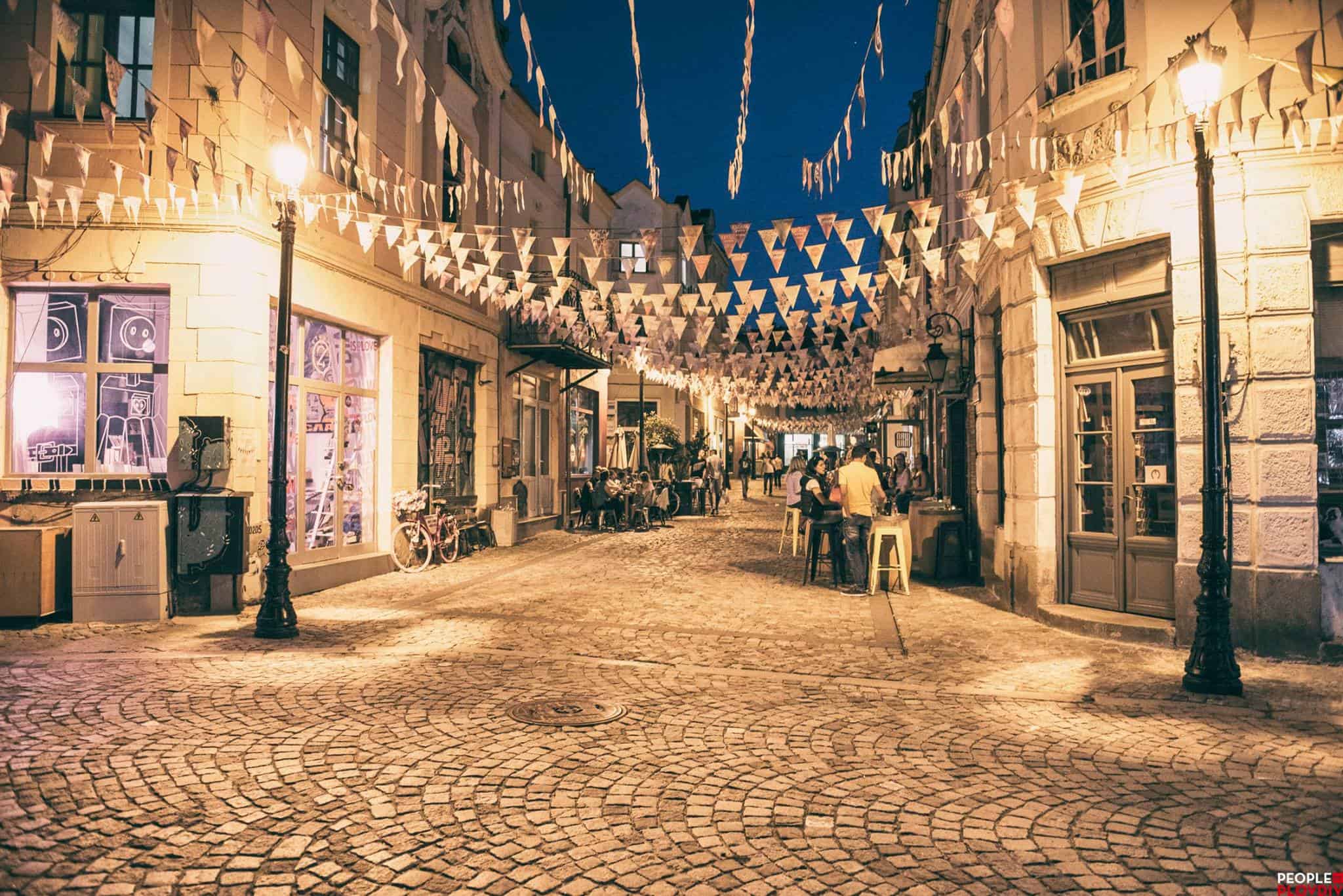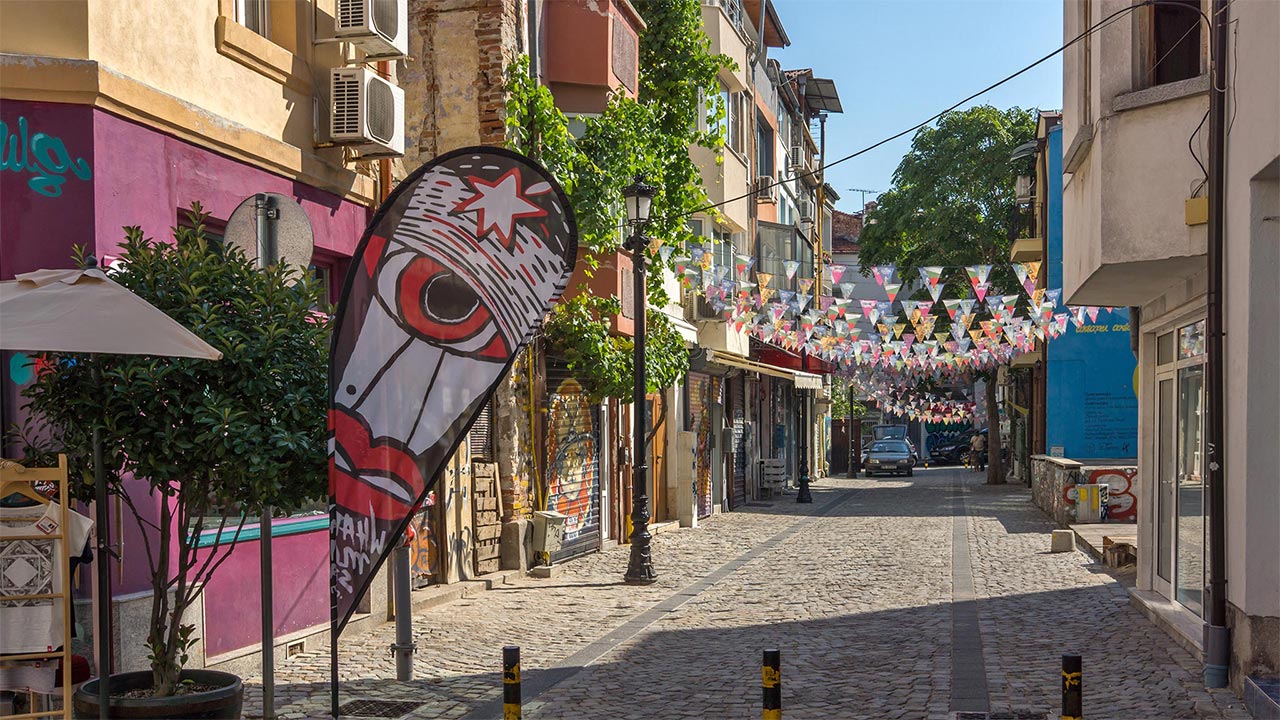Kapana Quarter
Overview
Kapana is a district in the city of Plovdiv, in the very center of the city. Created as a center of craftsmen around Kurshum Khan (on the site of today's Central Halls), the neighborhood is a special tangle of small streets with appropriate names - Zhelezarska, Kozhuharska, Abadjiyska, Zlatarska, etc. More famous landmarks around the neighborhood are Jumaya Mosque, Roman stadium, the old town.
"Kapana" has its name from the 15th century, when two narrow market spaces, crowded on all sides with shops called "Un kapan" and "Buyuk kapan", named the neighborhood around. This was the craft bazaar of Plovdiv, and in 1652 the shops there numbered 880. Until the beginning of the twentieth century, "Kapana" was the commercial heart of the city. There was international trade, playing a key role in keeping the craft alive in the region. Among the most impressive buildings in the neighborhood were Kurshumkhan, which housed the Abadji guild, and the Great Bezisten, a rectangular one-story building measuring 500 square meters where merchants stored their wares. The workshops of the various associations were located around the bezisten, and the names of some of the streets (preserved to this day) indicated where the shops for each craft were located - "Zhelezarska", "Zlatarska", "Abadjiyska", "Kozhuharska".
In 1906 a large fire broke out in Plovdiv and a large part of the buildings in "Kapana" were destroyed. In the 1970s, a plan was adopted to build a large shopping center on the site of the craft district. Detailed plans and projects of individual buildings are made, the expropriation of properties is started and the demolition of the first buildings is prepared. [2] However, the Kapana Collective, formed during this time, saved the neighborhood from complete destruction by convincing architects and institutions that Kapana was an exceptional place that made sense to preserve. An article by Antoaneta Topalova was published in the Plovdiv newspaper Otechestven Glas, appealing for the preservation of the neighborhood and its buildings.
In 1981, for the first time, a group of designers and architects presented a project to renovate the neighborhood, which aims to turn it into a multifunctional place and at the same time preserve the authentic spirit of the neighborhood. Their wish is for the old buildings to be preserved and for the new constructions to be in line with the style of the complex. In 1983, ten sites were reconstructed.
In 2013, it was announced that Kapana would be transformed into a district of creative industries by holding several festivals there since 2014.
In 2014 a competition was held for 10 sites in Kapana and after June 2014 the locations functioned and contributed to the appearance of the neighborhood itself, as well as to the appearance of the city of Plovdiv, a candidate for European Capital of Culture in 2019. The competition is refers to the studios and locations in the field of culture, as one of the main conditions is that these locations are provided to artists, craftsmen and cultural associations to renew the role and character of the Kapana district in relation to its tradition of cultural and craft center.
Hand in hand with the revival of "Kapana" in 2014, "Kapana Fest" appears - a street festival of arts and crafts, which is held annually.
Since 2014, Kapana has hosted the ONE DESIGN WEEK, ONE DANCE WEEK and ONE ARCHITECTURE WEEK festivals, organized by the One culture platform.
Recommended
- The old town of Plovdiv - an architectural reserve
- Hindlian House
- Ancient stadium of Philippopolis
- Clianti House
- Regional Archaeological Museum - Plovdiv


 Bulgarian
Bulgarian Romanian
Romanian

